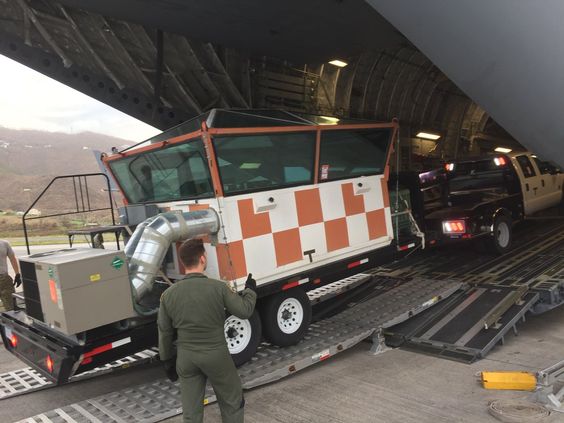The existing air traffic control tower at the airport was badly damaged by the storm, and controllers were managing air traffic from a tent on the airfield for several days before the mobile tower arrived this morning. The FAA is shuttling controllers back and forth from San Juan, Puerto Rico to St. Thomas every day to staff the facility.
A U.S. Air Force C17 airlifted the tower from Boise, Idaho, to St. Thomas, along with a custom-made trailer and a truck to unload it. The tower is equipped with an engine generator, an air conditioner, four radios for the air traffic controllers and instruments to measure barometric pressure, as well as wind speed and direction. The tower arrived in St. Thomas was fully operational in three hours and 25 minutes.
In addition to the air traffic controllers, the FAA has an airport certification inspector on site at St. Thomas to ensure the airport is safe before air carrier operations resume. He is working closely with the Virgin Islands Port Authority to ensure that its operation is stabilized, airport safety procedures are in place, all hazards are mitigated and the airport is fully compliant with federal regulations, so recovery efforts can expand and continue.
Airports and associated facilities including terminal buildings, parking lots and access roads are operated by local organizations that decide when to close to commercial operations and when they can safely reopen. The FAA does not decide if or when airports or other local facilities close or reopen. Some airports in a disaster area may stay closed to the public for several days in the wake of a storm to support the response and recovery effort or because roads to and from the airport are inaccessible. FAA air traffic controllers always are ready to safely resume air traffic control service when airports reopen, and frequently are managing air traffic operations for response and recovery flights while airports are closed to the general public.


 In the wake of Hurricane Irma’s destructive path through the Caribbean, the
In the wake of Hurricane Irma’s destructive path through the Caribbean, the